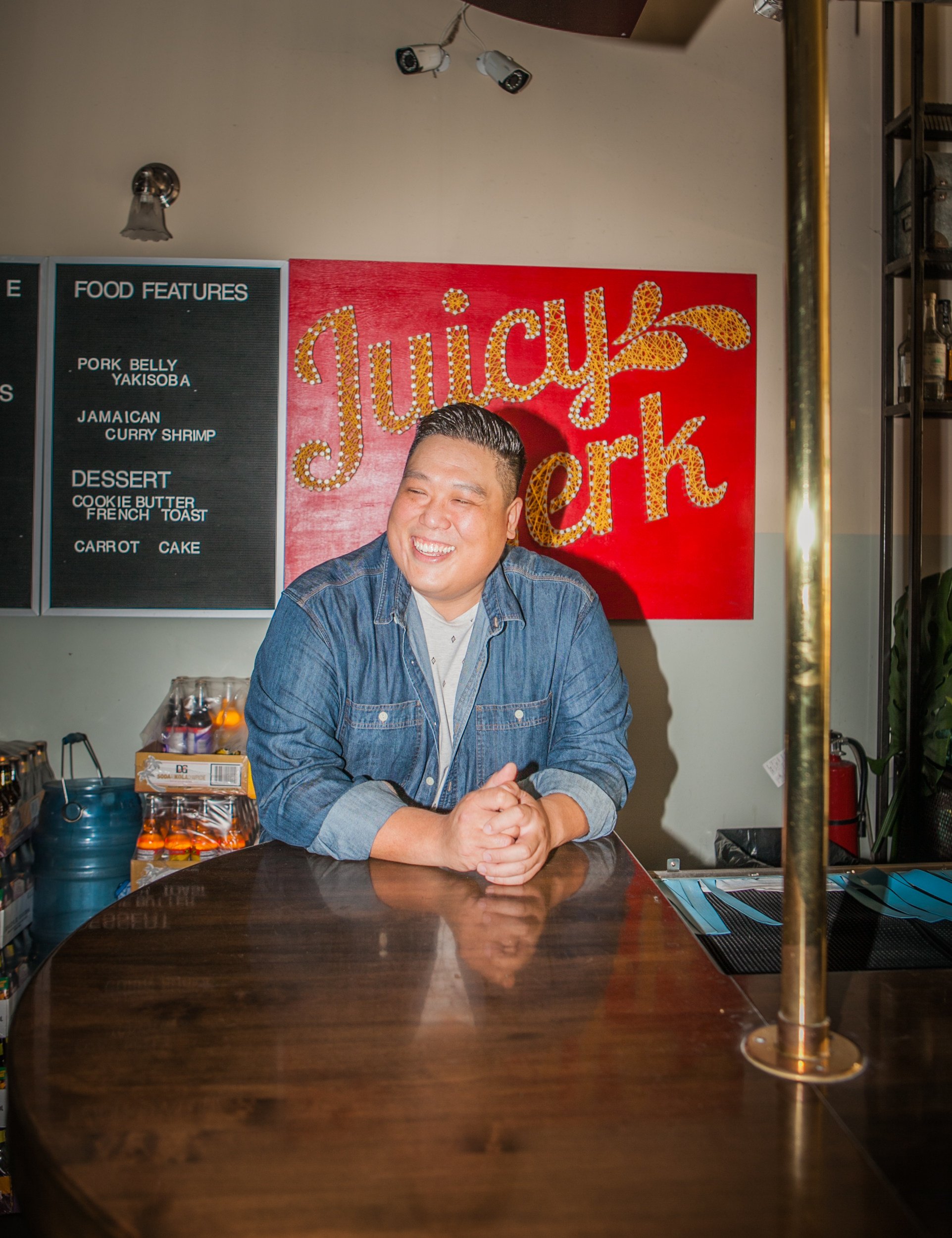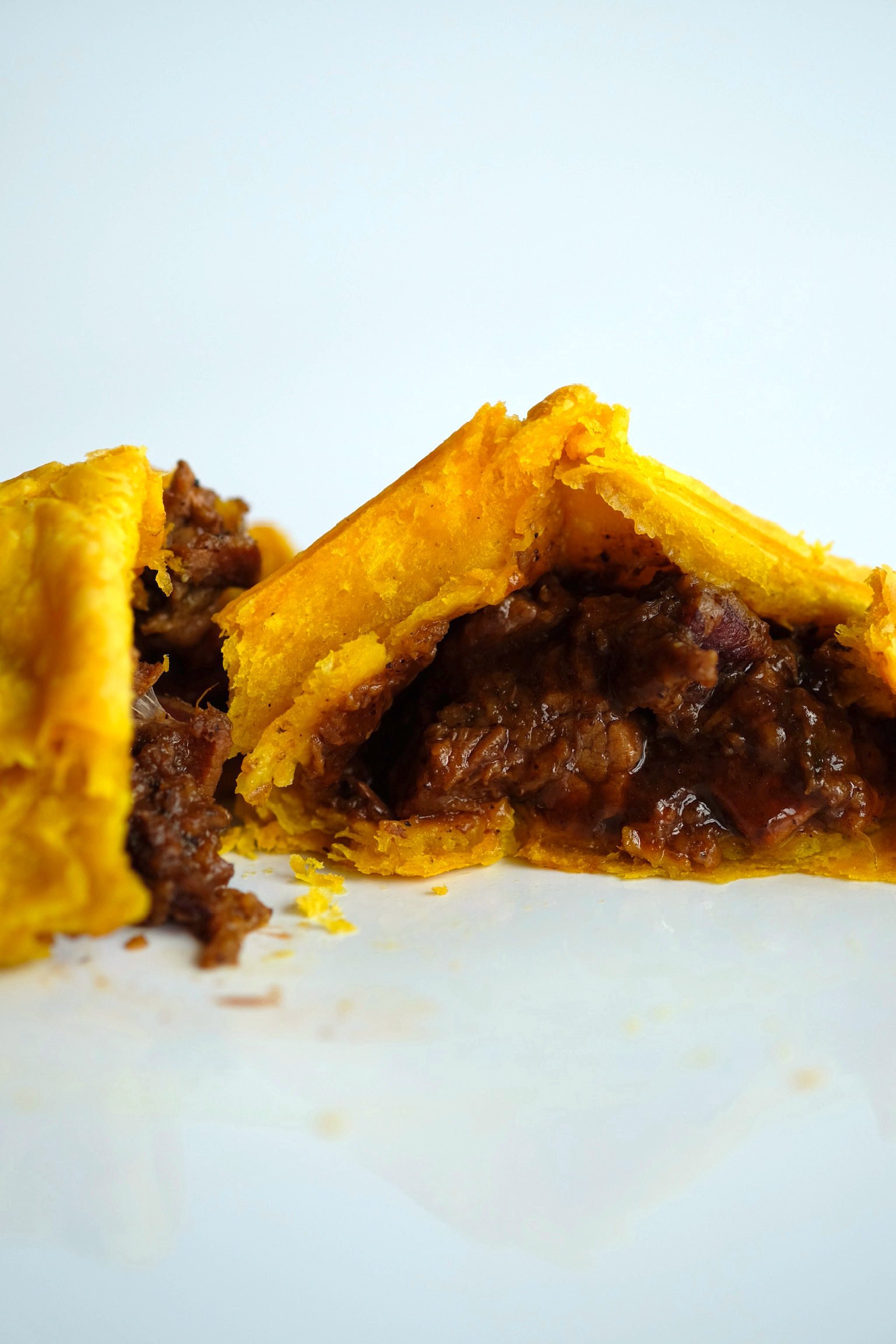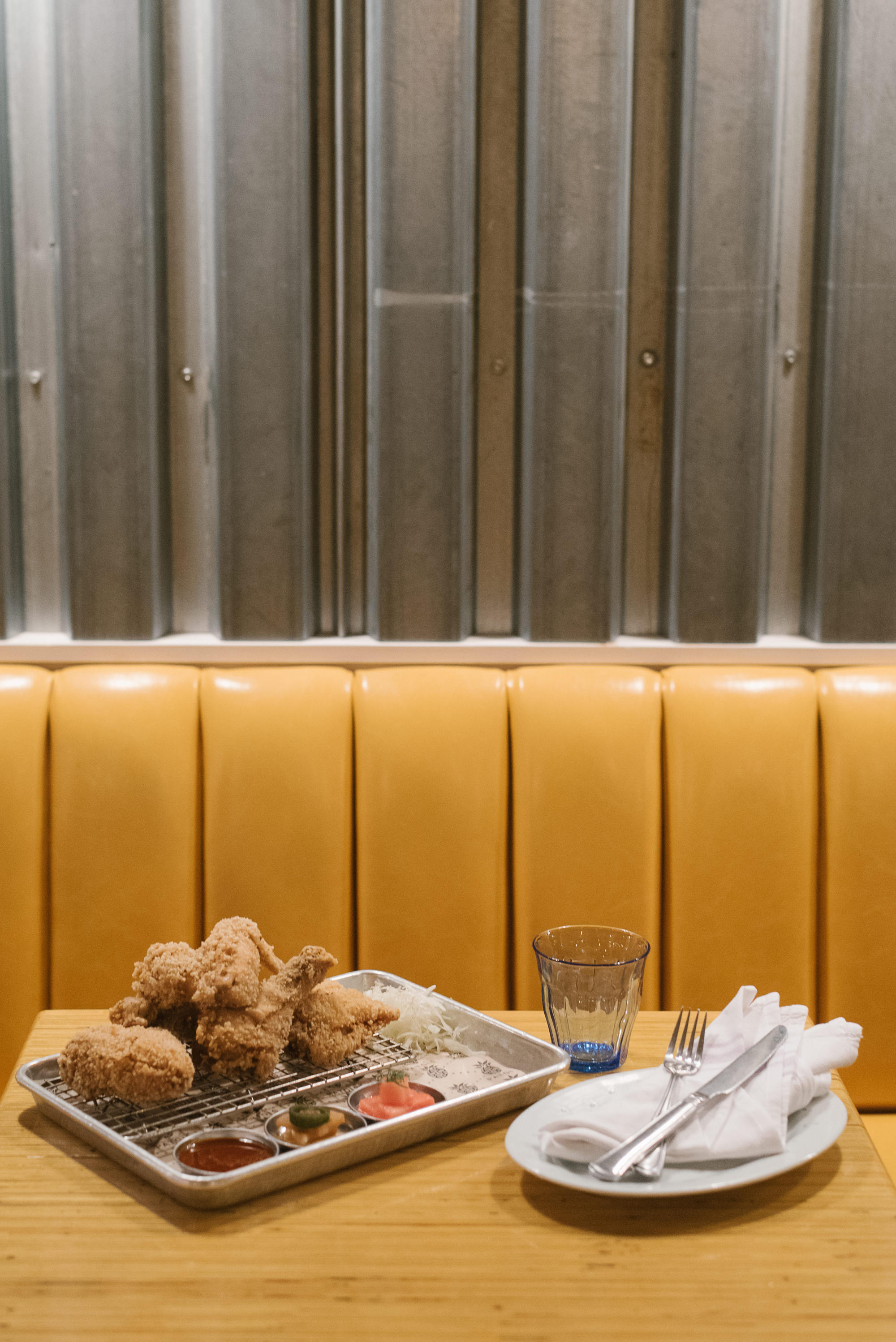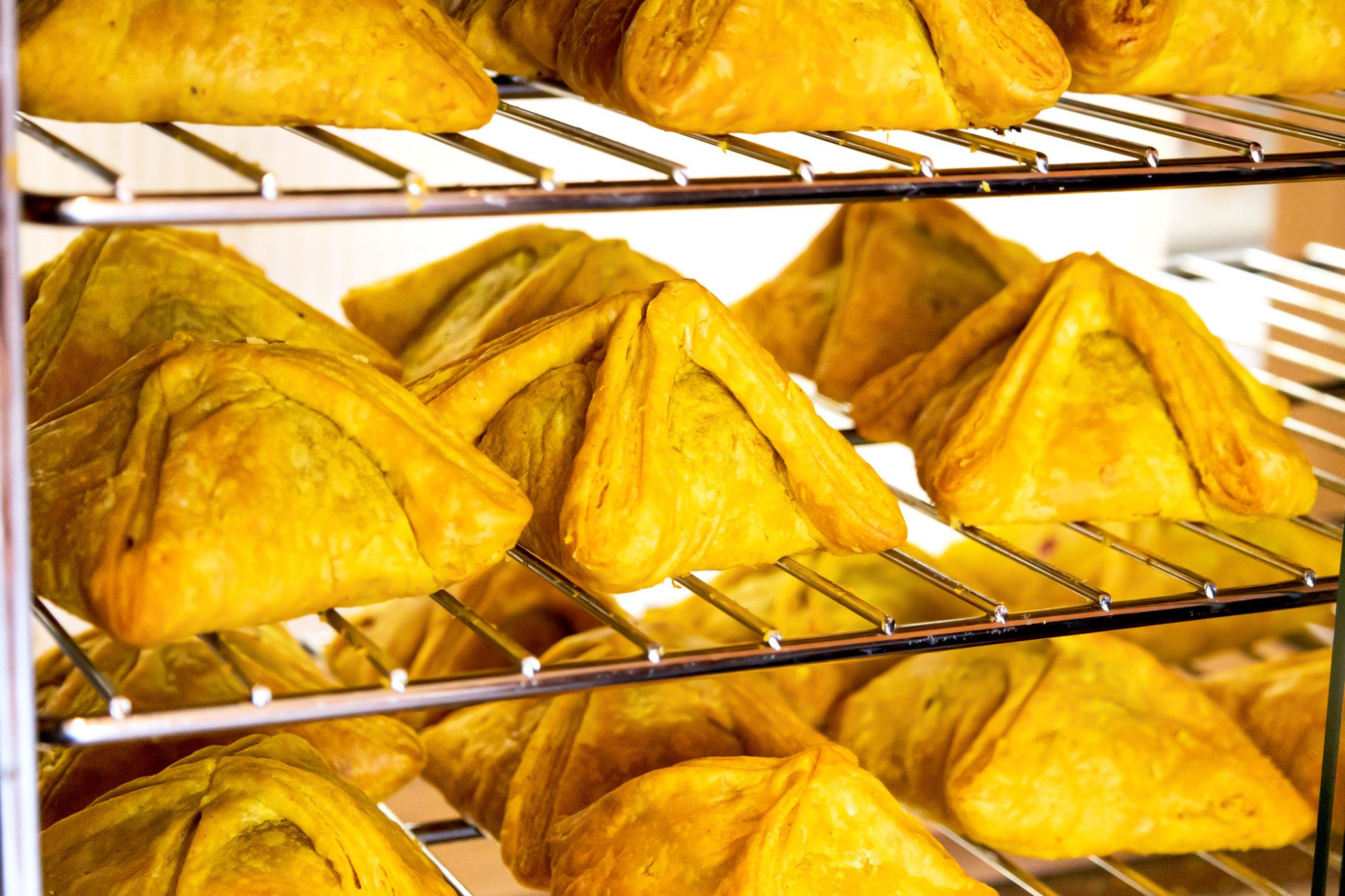
Jamaican-Chinese chef Craig Wong talks about Patois, his Asian-Caribbean fusion restaurant in Toronto, and his unique signature dishes
- Craig Wong, who has worked for Alain Ducasse and Heston Blumenthal, talks about how his fusion restaurant combines Jamaican and Chinese cuisines
- With signatures like jerk chicken chow mein and pineapple bun burgers, Patois, in Toronto, Canada, bridges East Asia and the Caribbean
In his kitchen, Craig Wong combines soy sauce, spring onions, ginger, thyme, pimento, pineapple, nutmeg, scotch bonnets and rum in a blender to make his signature fragrant Caribbean jerk paste, which he uses as a marinade for roasted jerk chicken.
Wong, 42, is the chef-owner of Patois, a restaurant serving Jamaican-Chinese cuisine in Toronto’s Little Italy. One of his signature dishes, jerk chicken chow mein, involves jerk paste mixed with oyster sauce in a stir-fry of onions, garlic, shiitake mushrooms, bak choi, chicken and Shaoxing wine. His menu also features the likes of Chinese pineapple bun burgers, and honey and Maggi beef short ribs.
He confidently declares there is no other restaurant in the world like his, and he might be right.
Wong’s connection to Jamaica goes back three generations on both sides of his family, until his parents moved to Canada in 1975.

Born in Scarborough, north of Toronto, Wong has fond memories of his paternal grandmother preparing a delicious range of Jamaican and Chinese dishes such as fried chicken, potato salad and steamed egg with minced pork. Back in Jamaica, she ran two canteens for factory workers and government staff, cooking Jamaican food with Chinese ingredients, and Chinese food with Jamaican ingredients.
“It’s not because she was trying to innovate. This was her way of life,” Wong says in a video call from Toronto.
World’s most famous butcher saw ‘Michelangelo with knives’ in Hong Kong
Jamaican food is a blend of cuisines, including Spanish, African, Indian and Chinese, resulting in dishes such as goat curry, fried dumplings, braised oxtail with peas and rice, and sweet potato pudding.
Growing up, Wong says he lacked the motivation to study. “Being a naughty kid, I gravitated towards trying to find somebody who could be inspiring. I wasn’t engaged in traditional types of schooling and I didn’t take well to authority that way,” he says with a smile, adding he went to seven high schools before graduating.
“If somebody wanted to get my respect, they would have to prove themselves. And so, in the kitchen, I would find these chefs that would take me under their wing. It was a very special time in my life.”
In the late 1990s, the restaurant scene favoured French and Italian cuisine, and it was when Wong picked up and read a copy of L’Atelier of Alain Ducasse (1998) that he decided he wanted to work for the top French chef.

“It was one of the first professional cookbooks I ever picked up,” he says. “And, just the way he was using ingredients, and the direction that he took the food in and the care and precision, that oozed through the pages. It was something I hadn’t seen elsewhere.”
In 2003, Wong set off for France to study at Institut Paul Bocuse (now called Institut Lyfe) before working his way through various kitchens with the goal of mastering fine-dining French cuisine. Luckily he was proficient in French, thanks to his parents insisting he attend French schools, and quickly learned how to network his way up the kitchen ladder.
“You don’t simply just go to any restaurant; you have to know somebody to recommend you […] I started in the smaller kitchens and worked my way up to the grandaddy of them all,” he says, referring to his goal of working at a Ducasse restaurant.
But it wasn’t an easy ride, and Wong recalls a lot of rivalry in the kitchen.

“It was the most competitive kitchen I’ve ever worked in,” he says. “People there were like dog-eat-dog. If it helped me to bury somebody else, that was the way that kitchen worked. It was a totally different experience when I went to The Fat Duck [Heston Blumenthal’s restaurant in Bray, England], for example, where it was nurturing, kind. That was somewhere that people would go out of their way to help one another.”
The three years Wong spent cooking in France and Britain inspired him to open his own French restaurant, but he also felt conflicted.
“I lived a double life,” he says. “At home I’m cooking Jamaican food, Chinese food. But in my mind professionally, I was thinking, ‘Hell no, there’s no way I’m going to be doing this kind of stuff in my restaurants’, and it builds an almost schizophrenic kind of approach to cooking. It took me a while to bridge those two sides and that’s when I started to feel more comfortable.”
After returning from Europe, in 2006, Wong worked for other chefs in Toronto before finally opening a restaurant that reflected his identity as a Jamaican-Chinese Canadian. In 2014, he opened Patois, a name that refers to the Jamaican dialect, which is a mix of African, Spanish, Portuguese, French and English.

At first, Wong was working flat out in every part of the restaurant, from cooking to serving to managing. A few months later, some customers came in looking for a chef to open a Caribbean restaurant in Dubai.
“When I first met my business partner, I was just like, ‘Let me see if I can give you a call back,’ and waited about a week to call him back. It wasn’t that I didn’t take it seriously, it was more my focus was on the chicken that I had on the grill, and then the prep that I needed the next day,” he says.
Wong rose to the challenge, however, and in 2016 opened Ting Irie, which serves modern Caribbean food, such as roasted plantains, jerk fried rice, and ackee (an ingredient similar to lychee and longan) and salt fish.
In 2018, Wong had plans to open Bar Mignonette, an intimate space serving natural wines and seafood upstairs from Patois. By the time he was ready to open, however, the Covid-19 pandemic had spread around the world. But not one to be dispirited, Wong went forward and launched the bar in the summer of 2020.

“Covid-19 was a shock to all of us, and it was a really troubling time for the whole industry,” he says. “I feel very lucky that our team stayed strong and hustled to make ourselves successful during that time. There were a lot of changes, a lot of thinking on the fly, being flexible […] and not being scared of ingenuity. It took every creative bone to make ourselves successful.”
If the pandemic has taught Wong anything, it’s to be open to new ideas.
“The days of the food business as singular restaurants, depending on people to come straight to us, are gone,” he says. “We have to offer new conveniences, like a lot more deliveries and ‘heat ’n’ serve’ care packages. It’s the new norm. I’m a very forward-thinking person, so I’m constantly thinking of how we can better serve people and how we can make new and exciting experiences.”

Something new he did in 2023 was travel to Hong Kong for a pop-up at Artemis & Apollo, in Wan Chai, and to cook with “Demon Chef” Alvin Leung and Yong Soo-do of Liberty Group.
In April, Wong will travel to Guangzhou to attend the Canton Fair and later to Shanghai for a collaboration at a contemporary Chinese restaurant called Bastard.
“The more I get into this business, the more I see it’s about the people. It’s not about the food, it’s not even about the guests or the experiences, it’s the people,” he says. “It’s a lot of trust. So when you find those people that you trust, you do everything you can to nurture that relationship and to preserve it.”

